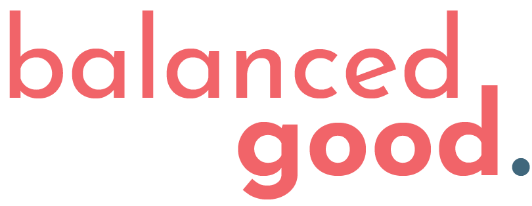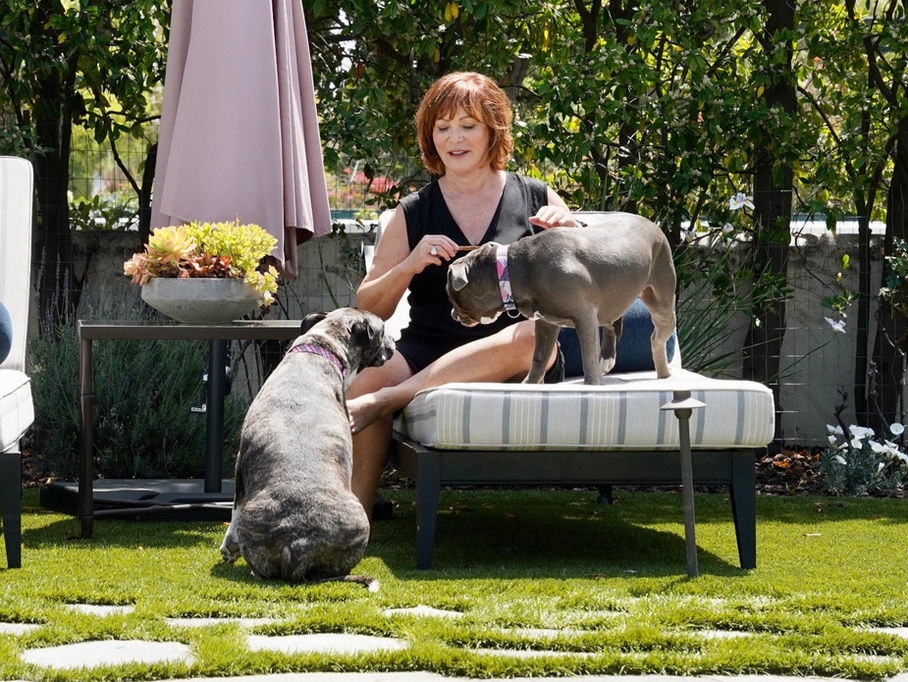Talking to Lisa Greer about the weak points in our sector (from the perspective of a donor!) & why we need a Philanthropy Revolution
Have you ever had a standout experience with an organization as a donor? And what about a lackluster experience?
I know I’ve let out some long sighs when I’ve read some thank you letters from organizations (or, worse yet, I don’t receive a thank you). I get it right now, times are beyond tough, workloads are high, likely kids are causing chaos in the background. But, we do owe something to our incredible donors (and they also owe those working in our sector some understanding and compassion).
Recently, I had the chance to meet Lisa Greer (she/her) at a Kimberly MacKenzie’s Women in the Hub event. Lisa brings an incredible and fresh perspective, sharing her experience as a “first generation” major gift donor. If you haven’t checked out her book Philanthropy Revolution I would suggest you give it a read.
I was able to chat with Lisa after we met and ask her some tough questions about our sector. I feel strongly that burnout and high turnover rates in our sector are impacting donor’s experiences. We are all dealing with (more than) a lot right now. I think being authentic and real with you donors can go a long way. Lisa agrees!
If you haven’t had a chance to listen to Lisa or read her book, I would encourage you to add it to your list. Lisa is an author, philanthropist, entrepreneur, and even supports and advises several charitable organizations where she’s experienced a deep connection or call to help them. This is where Lisa sees her donor experiences in action, being able to create open and honest relationships with a variety of charities, work that is extremely gratifying for her. She’s also a mother of five, and a very active volunteer including work as a Commissioner on the California Commission on the Status of Women and Girls and a Board member to the New Israel Fund. I hope you find this read as exciting as my conversation with Lisa.
 Briefly tell me about a day in the life of Lisa Greer.
Briefly tell me about a day in the life of Lisa Greer.
Get up early, get the kids fed and to school, check email, check COVID stats in my city, and check social media for any interesting fundraising/nonprofit posts. Then hit the Peloton or elliptical (some days) and, if on the elliptical, I listen to a podcast (check out a few that I have loved participating in here, here, and here) Then I begin to attack my call list. I try to pepper work calls with “friend” calls, but that doesn’t always work out.
As a caregiver, I typically need to check on my mom’s medication status and doctor’s appointments, as she’s 87 and needs lots of help. Often, we have doctor’s appointments every week or two, and sometimes more. I then check my kids’ grades online, and decide how I’m going to handle any issues (i.e. call tutors, email teachers, etc.)
By now, phone, text, and email messages are coming in. I check in my assistant to deal with upcoming speaking engagements, appointments with nonprofits, and other meetings, and we also discuss what I’m going to write that day/week for my blog, social media posts, or publications that have commissioned articles.
Usually, I’ll have one or more organizations or fundraisers who ask me for help with anything from marketing materials, fundraising pitches, or event board issues or office culture.
Also on my daily schedule are folks who have read my stuff and who I’d like to know more about (or I’d like to know more about their organization). It’s good for me to know what’s out there! Evenings are often events (usually online) and/or writing and then family time. Occasional tennis, too.
You and I met virtually, during a Women in the Hub discussion hosted by Kimberly McKenzie, about a month ago now. Right off the bat, I was struck by your perspective, as a donor to many charitable organizations, you brought such a light to many of the “weak points” in the social profit sector. Can you explain what motivates your work to “Save Giving”?
I can’t stand the idea that most of the revenue of many major non-profit institutions is coming from a small group of (typically older) donors. As folks pass on, I worry that thousands of organizations or more will just die, overnight, due to lack of (expected) funding. I can’t live without sounding the alarm about what a problem it is to ignore large swaths of our population who aren’t the “usual donor” on “the list”.
Not welcoming/reaching out to new prospective donors is not only bad business, but it’s a disservice to many people who want to experience giving and connecting to a mission that they care about. Once this all became clear to me, I realized that I had the experience and time to devote to providing solutions.
In your book Philanthropy Revolution you share quite a few shocking stories and experiences you and your husband, Josh, encountered when you first entered the world of philanthropy. However, you note: “…for every disappointing interaction in fundraising, there exists a meaningful alternative that has a bit of snowball effect: it increases our chances of delivering measurable impact”. Can you share some meaningful impacts that you’ve witnessed?
Yes! I talk about these often in the book. One of them is the Cedars-Sinai example. Our Cedars relationship had delivered and continues to deliver measurable impact that’s important to us personally and to the Crohn’s community worldwide. Our investment/endowment set the stage for literally millions of dollars of grants and the creation of a world-class research center.
If you haven’t had a chance to read my book, I share my experience in trying to make a gift to Cedars-Sinai. This was one of our first major gifts. After our first outreach to Cedars-Sinai, as “unknown” donors, it took a full six months (and much persistence on my behalf) before our gift was accepted.
What came of this? A new development training program at Cedars-Sinai that reframes our experience to ensure it doesn’t happen to any other donors in the future.
As a sector, we are aware of high-turnover rates in roles. There are many reasons why these high-turnover rates exist, but one reason I often focus on, is the impact compassion fatigue plays in turnover rates (especially for women). The social profit sector is working hard to solve the big problems in the world, and we often take these big problems home with us. Now, pair that with a sector that is 70% women, women who often shoulder the emotional labour of family life, and it draws a clear line that unless things change, women in our sector will continue to struggle, and roles will continue to turnover.
That’s a lot of background to get to this question – what impact does staff turnover have on your experience as a donor?
It depends. If I have a good relationship with the departing development person, it’s a bit unnerving. As much as I might love the organization, I might stop giving if my contact person there isn’t a “fit” – i.e. isn’t a relationship person, treats me like a dollar sign, etc.
If I don’t have a great relationship with the departing development person, and the new person is an honest, authentic, professional, kind person, I’m more likely to give, or give more, to the organization.
To add to that question, do you think the high expectations of these often lower paying social profit sector roles (lower paying as compared to their for-profit counterparts) play a role in some negative experiences you have experienced? I’m not making excuses for our sector (we need change), but how do we change our sector to better work with and support our donors in their philanthropic vision?
I think that we’re in an exciting time now, during this “Great Resignation”, where many, many people are focusing more on purpose than possibly ever before. That’s great for the sector IF we in turn focus on our staff. Many people will be willing to take a non-profit job at less pay because the mission is fulfilling for them, but they won’t take it – or, if they do, they won’t stay – if the organization isn’t well-run, professional, or supportive. Many in the sector forget this, and just focus on the “great hire” who they “got” for less money. That just doesn’t work.
One of the themes the struck me in your book is the importance of direct, transparent, and open dialogue between donors and organizations. You note that these authentic relationships could create more impactful outcomes for our sector. In your experience, what are the three best ways fundraising professionals can build authentic relationships with their donors?
- Treat them like you would want to be treated, not like some type of alien with money.
- Be honest. Donors don’t generally appreciate a curated report on how an organization is doing (“curated” meaning only good news). Most donors are smart enough to know that there are issues/challenges beyond “we need more money!”. And, if you say that everything’s hunky-dory except you need more money, they’ll know that you’re not being truthful. Hence, no real relationship.
- Ask them questions that help you know more about them, and to learn how you can be a better partner in this philanthropic relationship. How do they like to be thanked? How would they like to be communicated with? (Hint – many folks I know won’t answer a call from someone whose number they don’t recognize.)
For me personally, authenticity comes when you bring your whole self to work. Motherhood is a major part of me and my life. Motherhood has also created barriers for my career to excel (when I worked in a traditional fundraising shop), as a mother yourself, how do you bring your whole self to your philanthropic relationships?
I’m up-front and honest that I’m a mom with 5 children. I have two teenagers and three millennials. They’re great resources to learn about our next generation of funders. Beyond the in-house focus group, though, I also encourage other parents to be up-front about their families – it makes me like them much more. Can a relationship be authentic if you don’t know that they have kids? It doesn’t work in general social settings, and it doesn’t work in fundraising.
As a mother, when I look over at my sweet young children, I realize just how important “Saving Giving” is. The social profit sector, in partnership with donors like you, are working at tackling big problems to help improve our society for decades to come – making a better world for all our children. Can you share a bit more about how you involve your children in philanthropy?
Sure! We have lots of “salons” with non-profits at our home, so it’s very clear to my kids that we’re dedicated to learning about different organizations and that we want to support them. The kids all have Donor Advised Funds as well, and our twins have had (and used) those since they were 5.
What are the top 3 things our sector needs to do to “Save Giving”?
- Think about the donor as a human being, just like yourself.
- Realize that donors are typically intelligent people, and if you aren’t honest with them, are manipulative or cagey, or if you’re not really into having a “relationship” with the donor, they won’t continue to give to you. More importantly, they might think that you’re representative of all non-profits, and they might stop giving altogether.
- To have a relationship with someone, you need to ask questions. If you want to know what they think about your organization, or how often they want to be notified of your successes, just ask them!
Okay, I can’t wrap up this conversation without discussing the impact COVID has had, and is having, on our sector. How has this impacted how you support organizations?
Initially, we (and many others I know) shifted our focus to hospitals, PPE, and really hunkered down to focus on our local community. Now, as the pandemic persists, there is a shift of focusing on growing mental health supports.
And what about virtual events, are you burnt out from these yet?
Honestly, I see these events as a great opportunity and a positive finding throughout this pandemic. Video chats are much less time consuming then the traditional “lunches”, they allow for more direct and authentic conversation.
Ultimately, society understands there are still needs in the non-profit sector and asks to be made. My fear is I’ve heard of many fundraisers not comfortable with this and hesitant to shift to a new way of doing things. This is a mistake. We should be pushing organizations to encourage this and providing support to ensure all fundraisers are comfortable with this new way of meeting.
What is on your current reading list?
Beth Breeze’s “In Defence of Philanthropy”, Daniel Sokatch’s “Can We Talk About Israel?”, and “This is Going to Hurt: Secret Diaries of a Junior Doctor” by Adam Kay. Also, I’m re-reading “The Coddling of the American Mind” by Lukianoff and Haidt. Excellent book.
I hope you found this conversation as interesting as I did. I think it’s so important to look at our sector from a variety of perspectives and I appreciated looking at things from Lisa’s perspectives.
My key take-a-way from this conversation – your relationship with your donor should reflect an authentic relationship, we are all humans. Be real with your donors, ask the right questions, listen, and most importantly be honest. If you need to reschedule a meeting because you are contending with sick children, caregiving requirements for an elderly parent, or a pet that needs to be rushed to the vet, these help realistically strengthen the relationship. They allow the donor to see a different side of you, the fundraiser (who is also a parent, child, caregiver, etc.).
I would love to put in a “plug” for my next blog post, but these days, blog posts come as time is available.
If there is something you want to share on my blog, someone you would like me to feature, please email me at [email protected].
Take care and keep doing the good work you are doing!



